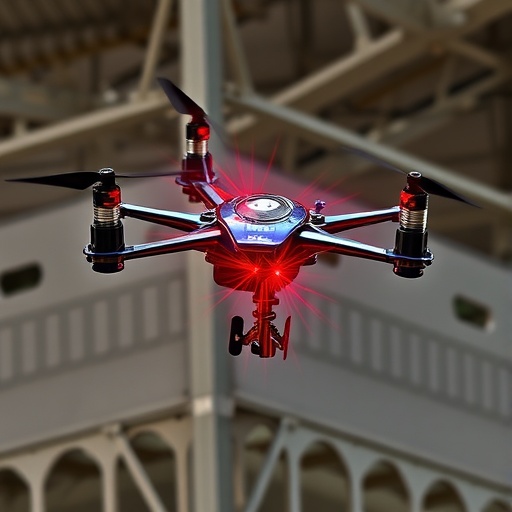Unmanned Swarm Systems (USS) have rapidly advanced as a robust solution across various critical domains, showcasing their potential in fields such as disaster management, logistics, and military operations. With the ability to coordinate actions amongst multiple unmanned units, USS can perform tasks that would otherwise be inconceivable for individual entities working alone. Their application in disaster scenarios, such as locating survivors or mapping areas deemed hazardous, demonstrates an innovative approach to emergency response. In the logistics sector, they assist in enhancing fleet coordination and optimizing urban traffic management, while military operations leverage their capabilities for reconnaissance and mission execution.
Despite the promise that Unmanned Swarm Systems hold, researchers have identified significant barriers that have hindered their wider deployment in real-world settings. Among these barriers are challenges associated with predicting swarm trajectories accurately and understanding the interactions among swarm units. Conventional models often exhibit limitations that either lead to unrealistic predictions by failing to consider physical constraints, such as maintaining safe distances or group coherence, or rely on opaque “black box” approaches that obfuscate the underlying dynamics governing unit interactions. These fundamental issues have formed considerable bottlenecks, preventing the achievement of reliable autonomous collaboration among swarm units.
In response to these pressing challenges, a noteworthy development has emerged from researchers Dr. Shuheng Yang and Prof. Dong Zhang at Northwestern Polytechnical University. In their groundbreaking article published in the Chinese Journal of Aeronautics, they unveil a novel Swarm Relational Inference (SRI) model designed to fuse swarm dynamics with dynamic graph neural networks. This innovative model effectively addresses the limitations of prevailing methods, marking a significant advancement in trajectory prediction and interaction analysis for Unmanned Swarm Systems.
At the core of this transformative model are inventive features that starkly differentiate it from existing approaches. First and foremost, the SRI model introduces a physically interpretable swarm motion topology graph that is grounded in rule-guided dynamics. By encoding classical principles such as separation and cohesion into explicit edge types and node states, the SRI model enhances interpretability and aligns the physical consistency of the inference process with its output. This advancement resolves the historical issue where traditional trajectory prediction models have struggled to adequately elucidate the mechanisms behind swarm interactions.
Further enriching the capabilities of the SRI model is the development of a dynamic graph inference architecture that couples temporal state with relationship strength. Building on improvements to existing models, such as the Neural Relational Inference (NRI) approach, the researchers devised a multi-dimensional Long Short-Term Memory (LSTM) network that takes into account both node states and interaction relationships. Within this framework, a relationship strength module employs multi-head attention mechanisms, allowing for dynamic inference that captures the evolving nature of node features and relationship weights. This layered complexity significantly bolsters the model’s representation of dynamic motion topology.
One of the most remarkable features of the SRI model lies in its establishment as an unsupervised end-to-end prediction framework that simultaneously optimizes interactions alongside trajectory predictions. By integrating motion topology inference with trajectory forecasting, the model is subjected to a unified optimization goal. The researchers innovatively designed a backpropagation training strategy that reconciles the topology graph reconstruction loss with trajectory prediction error, permitting the effective prediction of trajectories even when relying solely on historical data with no labeled motion topology.
Experimental validation of the SRI model showcases a marked improvement in performance metrics compared to existing methodologies, heralding a new standard for modeling and predicting in the realm of swarming technology. Specifically, results emphasize that SRI minimizes long-term prediction error by an impressive 93.1% against conventional LSTM models and by 62.4% when juxtaposed with the newly developed dNRI model. Such performance enhancements speak volumes regarding the model’s robustness and applicability in real-world scenarios.
Looking toward the future, the research team envisions further enhancements to the SRI model aimed at adapting to environments where data may be missing, varying numbers of nodes exist, and heterogeneous interactions among swarm units prevail. In practical implementations, scenarios often arise where some units experience temporary communication loss, leading to data gaps—a challenge that the SRI model aims to address. Moreover, the nature of swarms is inherently fluid, with dynamic changes in size as new units are introduced or existing units are extricated—an aspect the researchers are actively working to accommodate seamlessly.
In addition to these challenges, the researchers are also investigating how to account for heterogeneous interactions, wherein swarm units possess varying capabilities or perform distinct roles. Theory and application will be further refined through exploration of hypergraph structures and multimodal relationship encoding to facilitate a comprehensive understanding of interactions across diverse swarm compositions.
The ultimate ambition driving this research is to develop a universal tool for analyzing swarm intelligence, which could serve multifaceted applications ranging from military operations to disaster relief. For instance, the ability to predict enemy swarm behaviors can yield significant strategic advantages in military settings, while in disaster scenarios, reconstructing trajectories of missing drones could be vital in locating equipment necessary for ongoing rescue missions. Meanwhile, optimizing vehicle coordination in civil applications can lead to improved traffic flow, reduced congestion, and enhanced fuel efficiency—a reflection of the broader impact these developments could have on society.
In closing, the synthesis of advancements in artificial intelligence with traditional swarm dynamic principles produces a groundbreaking trajectory for Unmanned Swarm Systems. The novel Swarm Relational Inference model not only represents a leap forward in how we understand and predict swarming behaviors but also opens new avenues for practical applications that could redefine response times and operational efficiencies across various realms.
Subject of Research: Unmanned Swarm Systems and their trajectory prediction
Article Title: Motion topology inference and trajectory prediction method for unmanned swarm system
News Publication Date: 22-Jul-2025
Web References: DOI Link
References: Yang, S., Liu, W., Zhang, D., & Tang, S. (2025). Motion Topology Inference and Trajectory Prediction Method for Unmanned Swarm Systems. Chinese Journal of Aeronautics
Image Credits: Chinese Journal of Aeronautics
Keywords
Unmanned Swarm Systems, trajectory prediction, swarm dynamics, dynamic graph neural networks, unsupervised learning




